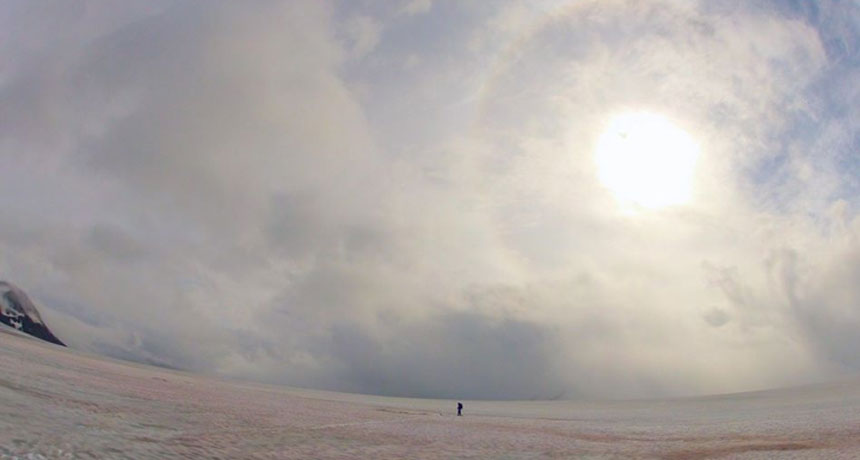
Certain microbes that grow on glaciers and ice sheets can paint the snow pink. Sometimes called watermelon snow, this reddish pigment makes the snow soak up more sunlight.
And that makes it melt faster, data now show.The alga Chlamydomonas nivalis (KLAM-ee-duh-MO-nus NIV-ah-lis) and its kin appear to be to blame. C. nivalis thrives in cold water. Although frozen, glaciers and snow are still watery environments, says Roman Dial. He’s a biologist at Alaska Pacific University in Anchorage. He also was an author of the new study.
These watermelon-hued algae appear in the spring and summer. At times they will proliferate dramatically. Ecologists refer to this as an algal bloom. Research had suggested a colorful blood could darken snow, fostering its melt. The reason: Dark colors absorb more sunlight. That’s why you feel hotter standing in the sun in a black shirt than in a white one. A bloom of C. nivalis is like covering snow with a dark t-shirt.
If microbes help melt the snow, that water might help even more algae grow. That could create a “feedback” cycle where increased melting creates conditions for even more melting. Or that’s what scientists suspected. But to be sure, they need to acquire some data from testing.
“We used everything from microscopes to satellites,” Dial says. Doing so confirmed that places with extra watermelon algae melted much faster.
The researchers shared their new data September 18 in Nature Geoscience.
Little microbes, big effect
Glaciers naturally have small amounts of nutrients. These include nitrogen and phosphorus. Higher levels of those nutrients might act as fertilizer to help algae grow. So Dial and colleagues added either plain water or water with fertilizer in it to different patches of snow on Harding Icefield. This frozen expanse in southern Alaska spans 1,900 square kilometers (730 square miles).
…
The post ‘Watermelon’ snow is helping melt glaciers appeared first on FeedBox.